

Table of contents
- Blue Daisy – Brachyscome iberidifolia
- Ivy—Hedera helix
- Efeutute – Epipremnum aureum
- Strawberries - Fragaria
- Busy Lizzie - Impatiens walleriana
- Gloxinia morning glory – Asarina
- Gold bidens – Bidens ferulifoli
- Spider plant – Chlorophytum comosum
- Hanging fuchsia - fuchsia hybrid
- Cattail – Acalypha hispida
- Nasturtium – Tropaeolum
- Kiwi Knotweed – Muehlenbeckia complexa
- Loyal to men – Lobelia erinus
- Petunia - Petunia
- Black-eyed Susan – Thunbergia alata
- Magic Bells – Calibrachoa
Plants strive towards the sun. Mostly. There are also some specimens whose shoots do not provide the strength to stand upright. They just hang down, for whatever reason. That's a good thing, because they're made for balconies. Hanging plants are no less beautiful and the variety of varieties is remarkable. They are just as flowering as pure green.
Blue Daisy – Brachyscome iberidifolia
Daisies don't just belong in a meadow. The flower pot can also accommodate a daisy. But this is not a real daisy and also different from the wildly growing and well-known namesake. The flower structure is similar, but the color is bright blue or purple. Purple. The plant itself also grows bushier and bears plenty of flowers. Slightly hanging, it is ideal for edging balconies.
- blooms from May to September
- enjoys sunbathing
- but also makes do with less light
- Keep substrate evenly moist
- fertilize every 14 days with liquid fertilizer
- Remove faded plant parts promptly
Ivy—Hedera helix
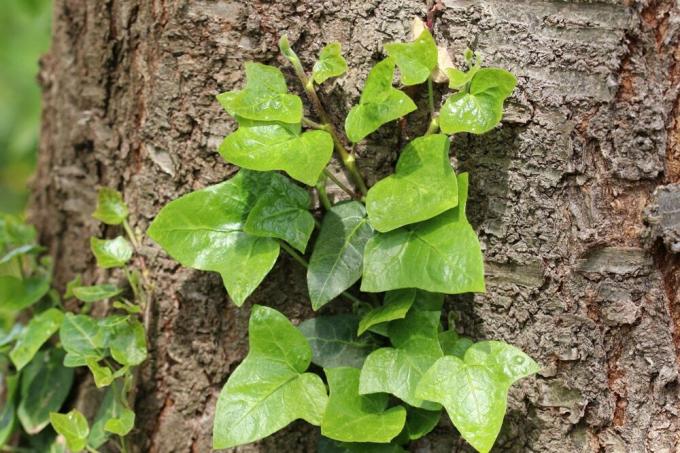
Admittedly, the green ivy is a bit boring as a solitary plant for many flower lovers. However, as a companion to flowering plants, it can provide valuable services. It provides a conspicuous green break in the colorful wall of flowers. Whether as a balcony decoration or as a houseplant, the fast-growing ivy delivers results quickly. But beware: the care is far more demanding than commonly assumed.
- evergreen plant decoration
- suitable as a house and balcony plant
- conventional potting soil is sufficient
- Water moderately, don't let it dry out
- low-dose liquid fertilizer
Tip:
Ivy is poisonous. If there are small children or pets living in the household, suitable protective measures must be taken or the handsome leaves must be dispensed with altogether.
Efeutute – Epipremnum aureum

If it rains outside and the beautiful balcony plants cannot be admired, the hanging ivy awaits inside. Depending on the variety, the green leaves have slight patterns. Their tendrils can quickly grow to 10 meters. A green curtain as a room divider is therefore easily possible with it.
- likes light to semi-shade
- grows well in hydroponics
- forgives slight carelessness when watering
- repot every two years
- fertilize in summer
- disturbing shoots can be removed at any time
Tip:
Cut shoots do not need to be thrown away. They can first form roots in a glass of water and then be planted. This is how you get cheap new ivy bags.
Strawberries - Fragaria

Decorative greening of the balcony and at the same time snacking on delicious fruit, that can be combined. Hanging strawberry plants such as the varieties 'Merosa', 'Diamant' and 'Hummi' also get along well with the limited space in the flower box.
- up to four plants per traffic light
- sunny and airy location
- the sunnier, the sweeter the fruit
- Potting soil enriched with compost and horn meal
- stable attachment of the pot necessary
- water regularly
- excess water must be able to drain off
- can be overwintered and continue to thrive the following year
Tip:
So that the delicious berries can go into your mouth without regret, they should only be planted on balconies far from busy roads.
Busy Lizzie - Impatiens walleriana
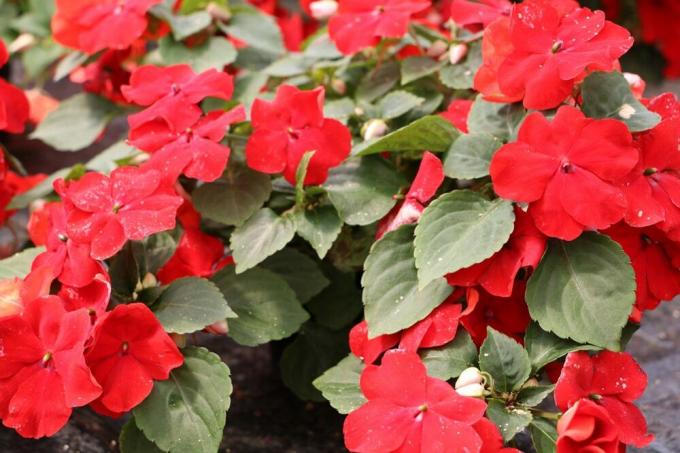
Yes, Lieschen, she is busy. And the preferred activity is flowering. Much to the delight of the owner, who can see enough of it for half a year. It doesn't mean that it's far away and the name is a bit old-fashioned, but with the beautiful, colorful flowers, that's quickly irrelevant.
- Lizzie doesn't like heat
- Drought is only tolerated for a short time
- In summer it's time to water, water and water again
- Support flowering with fertilizer every 14 days
- if faded parts are removed, new buds will follow
- Hibernation is not worth it
- Buy young plants in May
Gloxinia morning glory – Asarina
Gloxinia bindweed is a fast-growing climber. However, its long tendrils can also thrive hanging without a support. Despite increasing popularity, the sight of them is still not commonplace. For many plant lovers, this is what makes them so appealing.
- can be grown cheaply from seed
- great variety of colors
- fast growing and plentiful flowering plant
- sunny balcony is gladly inhabited
- the soil should be permeable
- water regularly in the morning or evening
- don't get the leaves wet
- too much moisture leads to rot
Gold bidens – Bidens ferulifoli
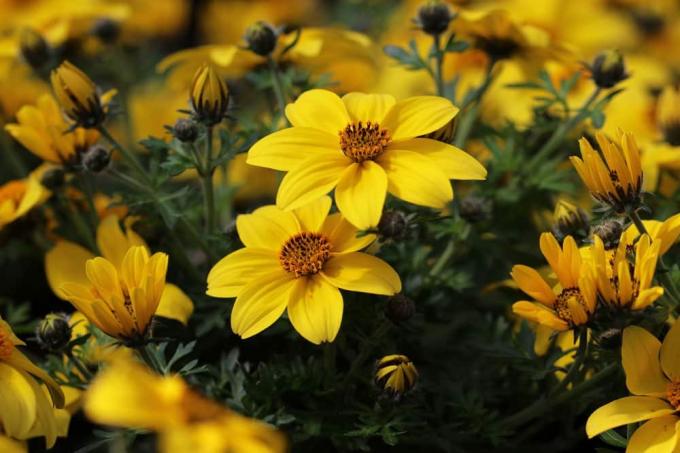
Goldmarie is the common name of this charming balcony plant. Their innumerable yellow blossoms shine like the sun. On the one hand, it is as noble as gold, on the other hand, it is modest in its care. This combination is seductive, because the balcony should not mutate into a second workplace. It creates the right atmosphere to end the day comfortably in a deckchair.
- grows strong
- two plants per box are sufficient
- Substrate should be permeable
- no further demands on the soil
- place bright and sunny
- water regularly
- fertilize once a week
- no repotting, no cutting
Spider plant – Chlorophytum comosum
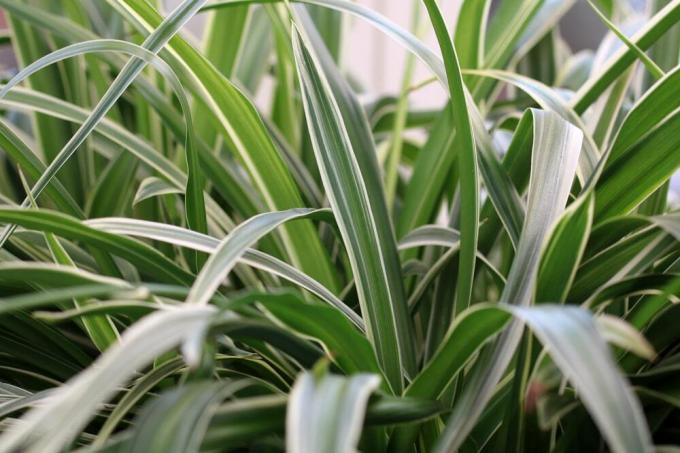
Another hanging plant for living spaces is the spider plant. It is so common that it is neglected. It just doesn't look exotic, the sight of it is well known to everyone.
It should be mentioned here for two reasons:
- she is very easy to care for
- With the right care, it unfolds a surprisingly beautiful shape
While spider plants require little maintenance to live, the right attention can bring out the best in them. She is grateful for:
- a bright place without direct sunlight
- loose, nutrient-rich substrate
- regular watering in summer
- weekly fertilization from March to August
- a sufficiently large pot and occasional repotting
Hanging fuchsia - fuchsia hybrid
The hanging classic par excellence. With so many varieties and colorful flower designs, fuchsias never get boring. She is never stingy with her blooming gifts and so the balcony is reliably transformed into a sea of colors in summer.
- long flowering period: from April to October
- for shady and semi-shady locations
- add some sand to conventional potting soil
- Fertilize weekly or with slow-release fertilizer
- do not tolerate drought
- regular watering is mandatory
- Sharpening causes stronger growth
- can be overwintered in a light and cool room
Cattail – Acalypha hispida
With its elongated shape, each individual flower is reminiscent of a cat's tail. Only the red color doesn't really want to go with it. There is no question that the cat's tail is an idiosyncratic flower that does not exist a second time. In summer, this plant likes to turn into a balcony plant. In winter it prefers to flee into the warm interior.
- the best location is half-shady and sheltered from the wind
- slightly acidic soil with a pH of 5.5
- fertilize monthly
- Remove faded as soon as possible
- Water regularly, but avoid waterlogging
- must hibernate at a minimum of 16 degrees Celsius
- Close to the heater, the risk of spider mite infestation increases
Tip:
If the temperatures climb steeply in summer, the cat's tail should be sprayed with water.
Nasturtium – Tropaeolum

Not only the eye, but also the palate can enjoy the nasturtium. The green leaves and bright orange flowers add a tangy flavor to salads. The climbing variety grows quickly and develops shoots up to three meters long. They can also be cultivated in flower boxes.
- Prefer February to April, direct sowing possible from May
- sheltered, sunny place
- the more light it gets, the more flowers it forms
- grows more sparsely in the shade and semi-shade
- normal soil with some clay and sand content
- high water requirement, especially on warm days
- only fertilize a little
Kiwi Knotweed – Muehlenbeckia complexa
It is also often called wire bush. Perhaps because the reddish-brown color of the stems is reminiscent of rusted wire. Many small round leaves are lined up on it. The interplay of these two elements creates a unique look, the effect of which is difficult to describe. You simply have to see a kiwi knotweed with your own eyes, then love at first sight can occasionally set in.
- suitable as a house or balcony plant
- sunny to semi-shady
- fresh, humus-rich soil
- fertilize during the growing season
- keep moist
- not susceptible to pests
- also known as Mühlenbeckie
Loyal to men – Lobelia erinus

The hanging variant of the men's faithful has long been a welcome guest on the balcony wall. This plant has some of the smallest buds of any common hanging plant, but quantity makes the difference. They grow densely so that the entire crown shimmers bright blue. The filigree flowers are reminiscent of violets.
- Shoots can grow up to a meter long
- whole plant is covered with small flowers
- blooms until September
- high sun intensity causes rich flowering
- in the shade they are not so colorful anymore
- humus-rich potting soil is ideal
- this should never dry out completely
- Use low-nitrogen fertilizer
- Cut back after the main bloom
Petunia - Petunia
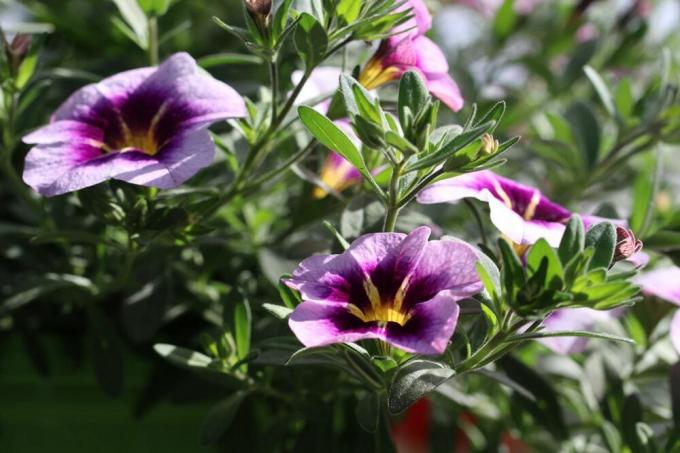
If you are looking for tireless permanent bloomers, you will find them in the petunias. They owe their wealth of flowers a long tradition as a hanging balcony decoration. Her popularity has spread to the breeders, who are busy bringing more and more new strains to the market. Whether in garden centers or simple supermarkets, the petunia is readily available and cheap.
- trumpet-like flowers
- in white, pink, red, violet and blue
- also colourful, patterned and filled
- Plants need a lot of light and tolerate blazing sun
- special petunia soil is commercially available
- have high nutrient requirements
- regularly clean out faded leaves
- susceptible to some diseases and pests
- therefore only buy vigorous-looking plants
Black-eyed Susan – Thunbergia alata

Bright orange and strong black. These are the two color components in which the flowers of Black-eyed Susan are immersed by Mother Nature. It was and remains one of the most popular plants, which is cultivated either climbing high or with hanging tendrils. In the second form, it is also well suited for planting in balcony boxes.
- different colored flowering specimens are now also available
- grows fast and profusely
- administer liquid complete fertilizer every 14 days
- Always keep soil moist
- place sunny, warm and sheltered
- can survive the winter in the bright and cool room
Magic Bells – Calibrachoa

Magic bells are simply magical bells. The flower-covered plant is very reminiscent of the petunia, although its flowers are smaller. It grows beautifully compact, the tendrils reach a length of up to 50 cm. Breeding skilfully plays with the entire color palette and thus brings Mediterranean flair to northern regions.
- annual plant
- many varieties are rain and wind resistant
- can be combined decoratively with other plants
- offer a sunny but not too hot spot
- use slightly acidic potting soil
- Keep soil moist, avoid waterlogging
- Drought makes them susceptible to pests
- Cut back slightly every four weeks
A notice:
Because of its appearance, the magic bell is often referred to as a mini petunia.
 garden editorial
garden editorial I write about everything that interests me in my garden.
Learn more about balcony plants

Eisbegonia, Begonia: care instructions from A - Z
The ice begonia is one of the most popular bedding plants, because they are characterized by their robustness and willingness to flower. When caring for ice begonias, there are a few points to consider when fertilizing and watering. As a houseplant, it is perennial and can be overwintered.
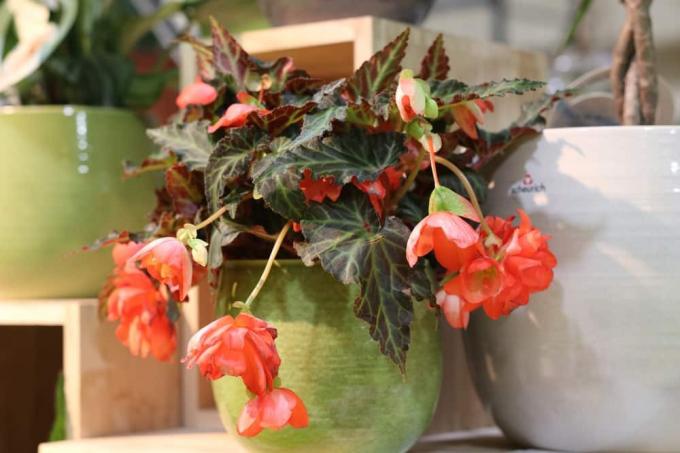
Begonia location: 3 important criteria
Begonias are easy-care plants. However, so that they can thrive and you can actually enjoy them, the location must be right. And that means above all: no direct sunlight, but shade or semi-shade. In addition, the soil should be as moist as possible.

Blue fan flower, Scaevola aemula: care from A - Z
Are you looking for an easy-care and robust flower for the balcony? Then the blue fan flower might just be the right plant for you!

13 balcony plants for sunny south-west balconies balcony flowers
A balcony with leafy or flowering plants delights both the heart and the eye. However, not every balcony plant is suitable for every balcony, because every plant makes specific demands on the location. We have put together for you which plants are particularly suitable for a south-west balcony.
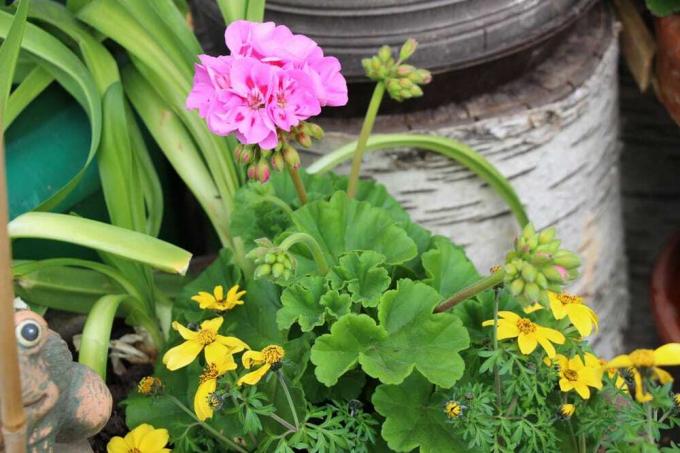
Scented geraniums: care, propagation and overwintering scented geranium
Is it the lush growth? The brightly colored flowers? Or is it its beguiling scent that makes the scented geranium our favourite? Does she have any other trump cards? Yes! As beautiful as she is, she is also undemanding. Your care succeeds!
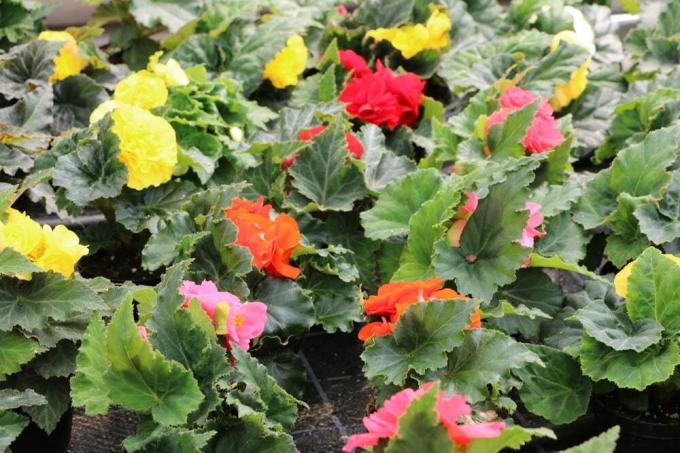
Driving tuberous begonias in 14 steps - prefer begonias
The flowering period of the tuber begonia starts comparatively late. Night frosts and slow growth are the two main causes. More time and heat are the solution. Propelling the tubers forward is therefore a tried and tested method of enjoying the splendor of color earlier and for longer.

